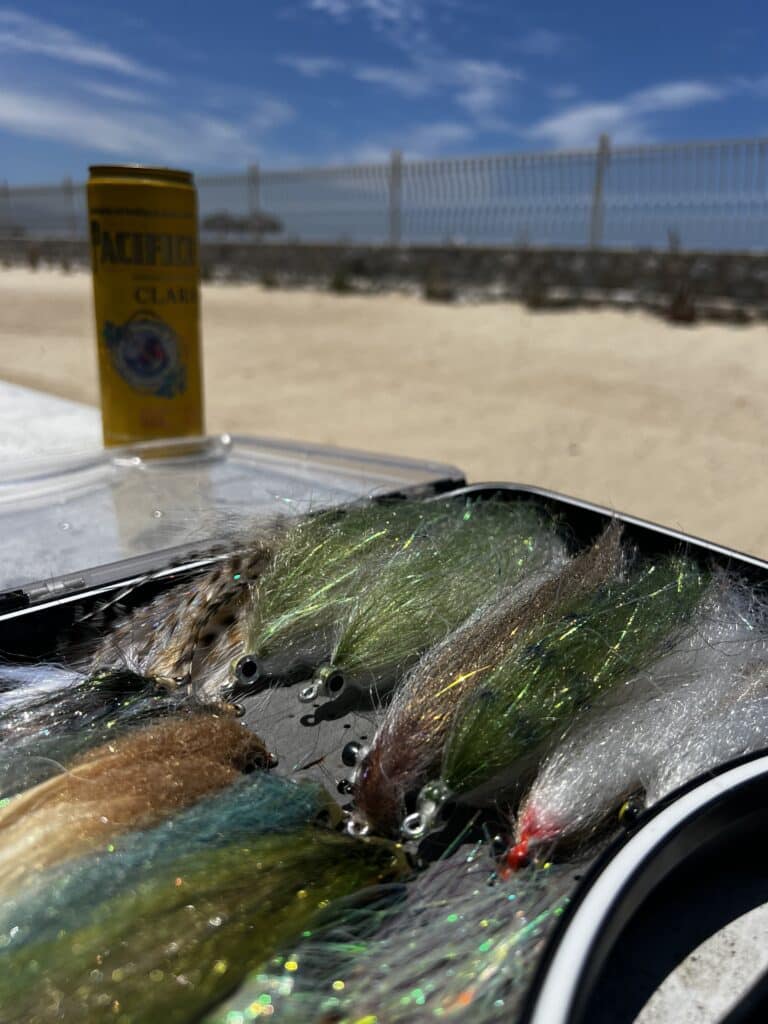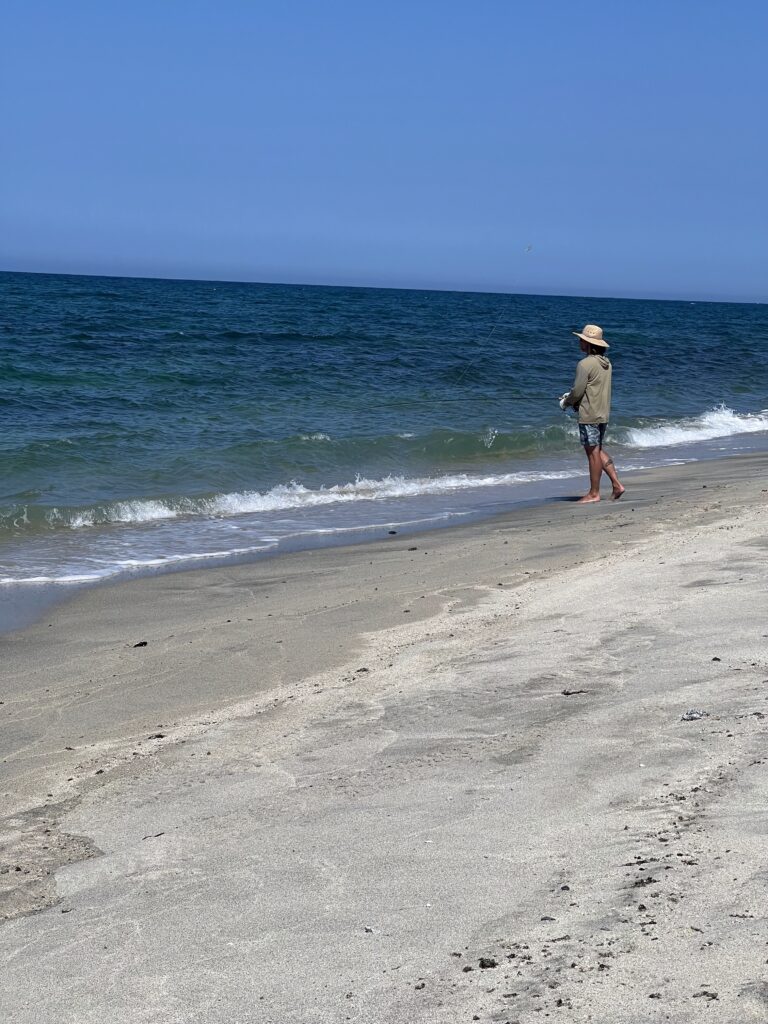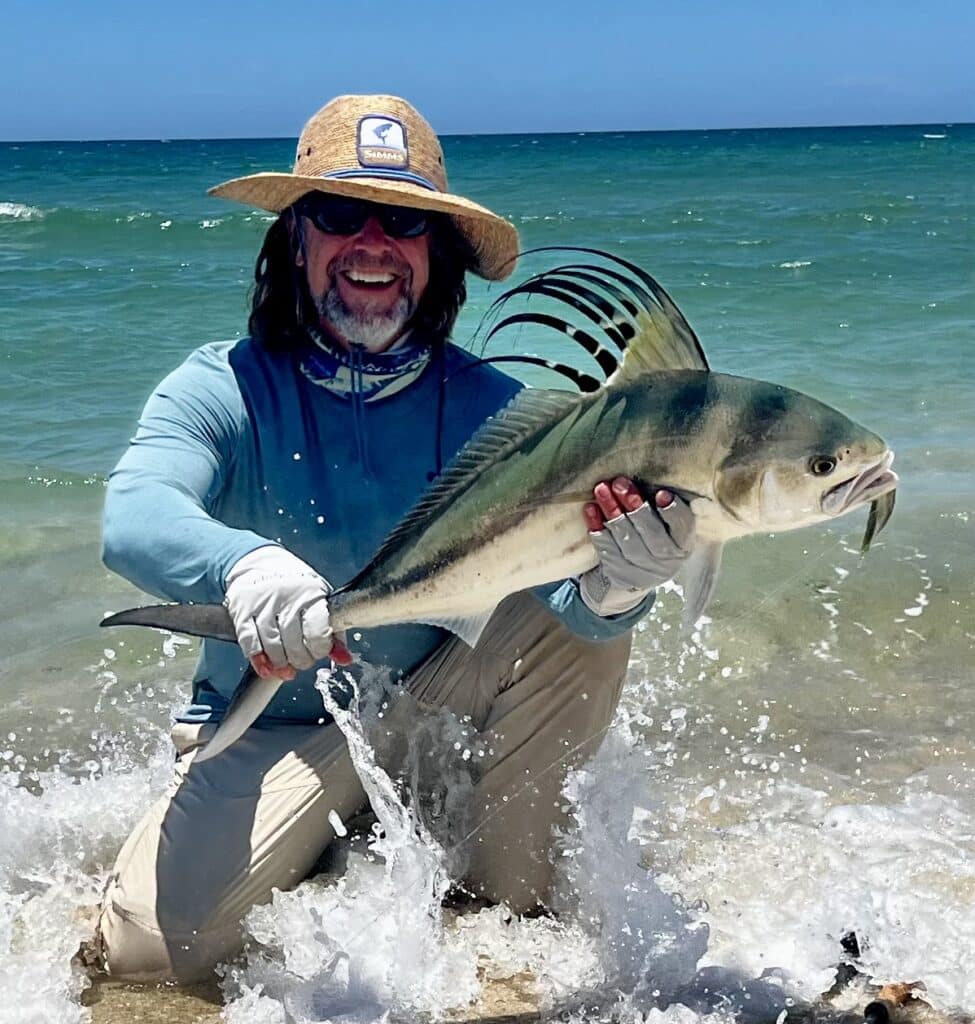Sea of Cortez, East Cape, Mexico
Few destinations get my juices flowing like Baja, Mexico. If you haven’t had an opportunity to experience its culture, remoteness, and amazing people, you should make room on your bucket list, especially if you fly fish. Although there is great fishing on the Pacific side, it’s Baja’s East Cape on the Sea of Cortez that entices those looking to battle with Rooster Fish on a fly rod.
A 70 mile stretch of beach from east of San Jose del Cabo to north of Los Barriles near Punta Pescadero, East Cape is peppered with smaller towns and communities full of family owned restaurants and bars. A stark contrast to the big resorts of Cabo San Lucas, East Cape communities (with some exceptions) have remained virtually unchanged over the last few decades.
Logistics
Flights from the U.S. west coast to Cabo San Lucas are relatively short and painless, and it’s easy to arrange a shuttle to meet you at the airport and deliver you to your rental. House and room rentals are reasonable in East Cape, and most have air conditioning and good wi-fi. Larger grocery stores are scarce, so many choose to pre-arrange a stop at Costco or a large grocery store in Cabo and stock up on supplies. If arranged ahead of time, the shuttle drivers are happy to accommodate.
WhatsApp is the text app of choice in Mexico, and most of Latin America. Make sure you have it on your phone and are familiar with it before you make the trip. It makes communicating with shuttle and taxi drivers much easier. It is also what fishing guides utilize should you choose to fish from a boat during your trip.
Speaking of guides, there are many quality ones in the area you can book who will put you on quality fish with their 18-30’ pangas. Fishing from a boat most definitely increases your odds of catching a Rooster. The focus of this article, however, is beach fishing for Roosters.
Rooster Fish are present in East Cape all year, but early summer is prime time. Yeah, yeah, I know, summer in Mexico is very hot. But it’s a cross many are willing to bear for a shot at such a magnificent fish. The breeze on the beach helps, as does a nice pool to retreat to at the end of a fishing session. I’m lucky enough to have a wife that loves the sun, and as long as she has a good book, a Modelo, and a pool, she’s in heaven. The wind on the East Cape generally picks up pretty good after mid-day which is a good excuse to join her at the pool and relax the rest of the evening.
Apparel
Let’s talk a little about apparel:
Sun Protection:
Sun hoodies rule the wardrobe. They are light, have a good SPF rating, and dry quickly. I really like the materials currently being used by Patagonia and Orvis. And while I do bring several pairs of fishing shorts, I would highly suggest bringing a couple pairs of lightweight wading pants for their sun protection. I actually prefer fishing in pants vs. shorts on really hot days.
A good, large-brimmed hat (the Fishpond Lowcountry is a cool hat), a neck gaiter and some sun gloves complete the uniform.
Quality sunglasses like Bajio, Costa, or Smith are a necessity. Don’t forget to bring some cleaner and a cloth with you while you are fishing. The surf can kick up quite a bit of spray and before you know it your lenses will be covered with salt. Don’t rely on using the built-in cleaning patch on some fishing shirts. Inevitably, when you need it, it will be wet with salt water or sweat and be unusable.
Oh yeah, shoes. This has been a struggle for me. I’ve experimented with a variety of footwear over time. The issue is the sand on the East Cape beaches. It’s coarse, really coarse. When it gets into your shoes or flats booties, it’s painful. I have yet to find a boot or shoe that seals well enough to keep the sand out. I have accepted that bare feet is the best option, so flip flops get me down to the beach and over the dry hot sand. Once I’m on the cooler, wet sand, they get clipped to my waterproof backpack.
Bring a high-quality, high SPF, reef-safe sunblock. Apply it when you are dry, and well before you start fishing. Reapply regularly, especially to the tops of your feet. Walking through the surf and that coarse sand wears the sunblock off rather quickly. Burns to the top of the feet are no bueno.
Don’t forget your lips. On my last trip I paid the price of forgetting SPF infused lip balm. I ended up with cracked and bleeding lips. The sun takes no prisoners.
Gear
Fast action 10 and 11 weight rods are ideal for Roosters from the beach. They allow you to cut through wind while throwing large Sardina and Mullet patterns, and have the backbone to spar with a big Rooster if you’re lucky enough to connect. A matching quality saltwater fly reel with at least 300 yards of backing is mandatory. Because of this, gel-spun backing is preferred because of its smaller diameter. Don’t skimp on the length of your backing. Remember, you are on the beach, and it ain’t going anywhere. You can’t chase a fish down like you can in a boat.
You will inevitably see other types of fish when you are scanning for Roosters, and if you’re like me, you may not be able to resist casting at them. If you have the same weakness, bring an 8 weight rod to use for blind or sight casting to small jacks, ladyfish, and houndfish. Your shoulder will appreciate not throwing a 10 or 11 weight all day.
Intermediate tropical fly lines are key. Lines such as the Scientific Angler Sonar Titan Tropical/Jungle and Rio Tropical Outbound Short are good choices. If you plan on doing some boat fishing, I would also encourage you to bring a deeper sinking line. I am a big fan of the Rio Leviathan Tropical and had success with it this last winter in Costa Rica.
Short, hand tapered leaders, five to seven feet long, work well in turning over the big flies. I use 40, 30, and 20 lb. fluorocarbon. Bring tippet material with you to the beach. Saltwater flies in baja should be tied on with a strong loop knot to allow proper movement of the fly. These knots eat up tippet quickly so you should be prepared to add more when needed.
A good pair of pliers should be considered a necessity, but I would strongly encourage you not to wear them on your belt. In fact, having anything hanging off of you should be avoided if at all possible. It lessens the chance of your line snagging while casting or when a fish is running.
The rough sand can wreak havoc on your hook points, and the last thing you want is a missed connection due to a dull hook. Roosters have hard mouths, and you’ll need any advantage you can muster. Sharpen your hook often. I prefer the Loon Apex Hook Hone XL for large saltwater flies.
I suggest a decent size streamer fly box filled with sardina and mullet patterns in various colors. Pop into the shop and we can show you several proven patterns to stock up on. Because of the remoteness of Baja, especially on East Cape, finding flies and fly fishing related gear is nearly impossible. Take what you will need with you.
All of the above items should be stowed in a good waterproof backpack or sling such as the Fishpond Thunderhead or Patagonia Guidewater. Make sure you have one big enough to bring an ample amount of water with you.
Tactics
Now that we have gone over gear, let’s talk a bit about pursuing these brutes from the beach.
Fishing for Roosters from the beach is hard, and you will need to manage your expectations. In some ways it’s much more like hunting than fishing, and hunters don’t always bring home a trophy. The one advantage we have as fishermen is the coloring of Roosters in the surf. Their black tiger-striped back can be very visible if the sun is on the water and the wind is cooperating.
Roosters will cruise by themselves at times, but are often in groups of two or more. They will approach the beach from different angles and will sometimes suddenly appear from out of the depths. They disappear just as quickly. Whether you are walking the shoreline, or scanning the beach from an ATV, you have to be prepared to move toward the fish quickly. It is physically demanding chasing these fish down the beach. This exertion, combined with the hot sun means you need to be in some decent shape. Even when they are just cruising, they are moving swiftly. You will find yourself running after them, while at the same time peeling line off your reel and setting up for a cast.
I’ve found it really useful to know how many line pulls from my reel it takes to reach a specific casting distance, taking in variables like wind conditions and location of the fish. For example, in no wind, you may count out twenty line pulls to get to 60’ of casting distance. In heavy wind, you may only need to pull off half of that. It may sound trivial, but seconds count when you have a small window of time to cast to an elusive fish.
It can also be difficult to carry 60-80’ of fly line coiled in your hands while running or walking quickly after a fish. It is helpful to practice coiling the line in a way that allows you to clear it to your side without tangling. There is nothing more frustrating than losing a shot at a Rooster because of a bird’s nest in your line, and it will occasionally happen regardless of how careful you are.
Because of the inevitable wind, you should be proficient in casting techniques that will allow you to keep that 4/0 hook out of your back. A “backwards” cast that allows you to release your fly on your backcast is definitely worth working on.
Baitfish patterns should be stripped very quickly, as soon as they hit the water. It’s ok if your fly “skips” a bit on your first few pulls. I prefer to tuck my rod/reel under my armpit and strip hand over hand rather than stripping with a single hand. There really isn’t a significant difference in the speed of the fly, but it does prevent you from “trout setting” your hook, which is crucial. If your line does go tight, make sure you seat that hook well before moving to your reel. Then hold on. Even if the Rooster wins the battle in the long run, you will still have “perma-grin” for the rest of the day. We hope you found this info helpful, and really encourage you to spend some time in Baja. Not simply for fishing, but to experience the amazing Mexican people and culture.
If you are preparing for a trip, please swing by and see us at Confluence Fly Shop. We would love to give you additional insight on East Cape and get you dialed in for an epic trip!
– Chris Ray




